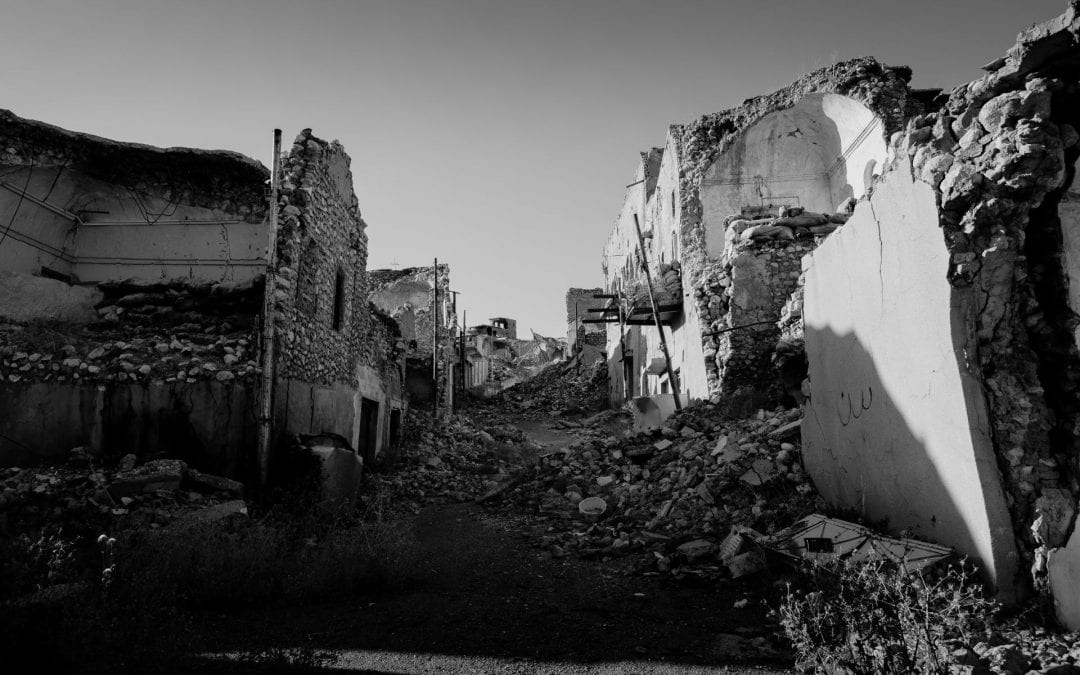By Ben Goldson
Ben Goldson discusses the long-term ramifications of the Iraq War.
On 20th March, 2003, United States President, George W Bush, announced that America, already at war in Afghanistan, would lead a coalition of forces with the intention of deposing his Iraqi equivalent, Saddam Hussein. This was the final stage of deteriorating relations between the two countries. During the 1980s their mutual animosity to the newly-established Islamic Republic of Iran had placed them roughly on the same side. The United States provided military support to Iraq, including the provision of materials needed to carry out chemical and biological warfare. Less well-received was Hussein’s war with another nearby country in 1990, this time Kuwait. Iraqi troops were driven out of the country by an American-led coalition, while the regime was denounced and placed under various sanctions.
Despite the embargo, Hussein managed to stay on as President until 2003. By that time he had been accused of hoarding Weapons of Mass Destruction and co-ordinating with terrorist groups, in contravention of United Nations edicts. Although the proof for much of these allegations would be later picked apart, at the time it served as the basis for an ultimatum, mandating that Hussein and his sons leave Iraq. This was refused, and so began the war.
Before the year was up Hussein had been overthrown, captured, and handed over to the new government for execution. By this time victory had already been declared, in May, during a photo op which would come to symbolise the hubris behind the war. President Bush, wearing an Air Force flight suit, gave a triumphant speech on board an aircraft carrier, with its conning tower bearing a banner emblazoned with “Mission Accomplished”.
Back in Iraq this would prove to be grimly premature. Even before Hussein’s capture, self-organised irregular forces had attacked the foreign invaders. Now they were not doing so in defence of the Ba’athists, they were doing it for themselves. Various local militias attacked the coalition, the new government, and increasingly each other.
Unlike the wider Muslim world, Shia were a majority in Iraq, reflecting the country’s close proximity to what had once been the leading Shiite power, the Safavid Empire in modern-day Iran. During their conflict with the Ottomans, who claimed legitimacy over Sunnis, the Safavids had promoted Shia Islam as an alternative, not unlike the relationship between Catholicism and Protestantism in Western Christendom. When the Ottoman Empire was carved up by the British and French during World War One little attention would be paid to religious, or ethnic, differences, which would explode in post-Hussein Iraq.
The escalating violence caught the victorious coalition unawares. Hussein had been captured and freedom had been established, so their involvement was supposed to be largely over. Instead, they were faced the loss of all their hard work, into a quagmire of religious conflict. By 2007 the Americans had injected 20,000 more troops into the conflict, and Iraq was pulled back from the brink, at significant cost. The insurgency would continue, but on a scale judged to be manageable, and again presumed to be the dying embers of the conflict.
By the end of 2011 the last American combat soldier had left Iraq. By this point the Arab Spring was underway, including in neighbouring Syria. Early on President Bashar al-Assad had ordered security forces to crack down on the protestors, described as terrorists supplied by hostile foreign powers. Sensing a soft target, an al-Qaeda affiliate, the Islamic State of Iraq, began infiltrating the country with veterans of the insurgency. They were successful to the point that the ISI began to outgrow its titular leaders, already rocked by the death of Osama bin Laden.
2013 saw a schism in al-Qaeda after the head of ISI, Abu Bakr al-Bagdadi, declared that their Syrian branch, Jabat al-Nusra, was to officially merge into a new group, the Islamic State of Iraq and the Levant, under his leadership. This new group, ISIL, was rejected by bin Laden’s successor, as well as al-Nusra itself, and so al-Bagdadi decided to strike out on his own. By 2014 he had proclaimed himself to be the leader of the global Islamic Caliphate and set about creating his new holy empire.
ISIL fighters began to stream back into Iraq, winning a series of rapid victories. In January they captured the city of Fallujah, already a centre of opposition to the new government. By June, with the army focused elsewhere, ISIL struck in Northern Iraq, leading to the fall of Mosul and the displacement of around 500,000 civilians. Once again the foreign coalition was forced to prevent what seemed like the imminent collapse of Iraq.
By 2018 the tide seems to be turning against ISIL, at least as far as Iraq is concerned. Much of the territory controlled by the group is back in government hands. This has not been achieved without controversy, such as the role of Shia militias in recapturing Sunni-majority neighbourhoods, with qualms about their reported ties to Iran, or a possible proclivity for ethnic cleansing and war crimes.
The invasion cost the United States what remained of its credibility in the region. Iraq became a training ground for al-Qaeda and its offshoots, which have inspired terror attacks around the world, including mainland America. Meanwhile, the new government has maintained far closer ties with Iran than under Hussein, whose overthrow was the only objective which was achieved. When it came to establishing a peaceful, stable nation, or as President Bush put it, “Help[ing] democracy and peace and justice rise in a troubled and violent region”, the war was an overwhelming failure.
Ben Goldson is a history graduate from the University of Auckland and a reporter at 95bFM radio in Auckland. He is the host of This Day in History on 95bFM’s news and current affairs show The Wire.
Disclaimer: The ideas expressed in this article reflect the author’s views and not necessarily the views of The Big Q.

